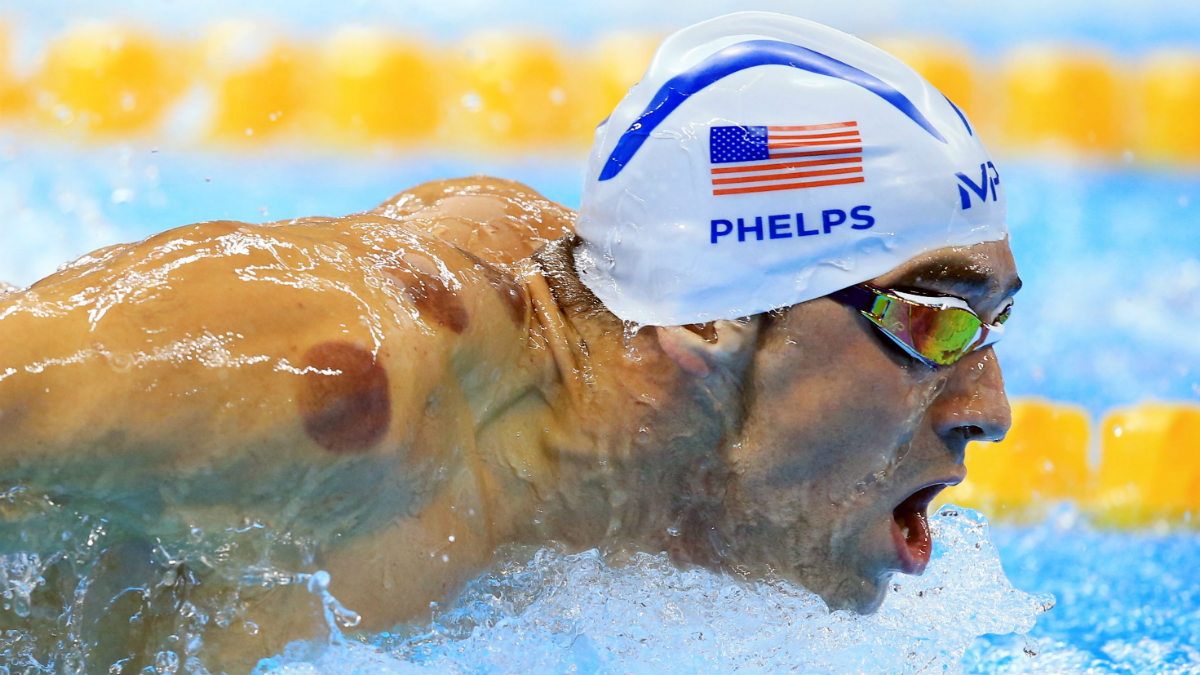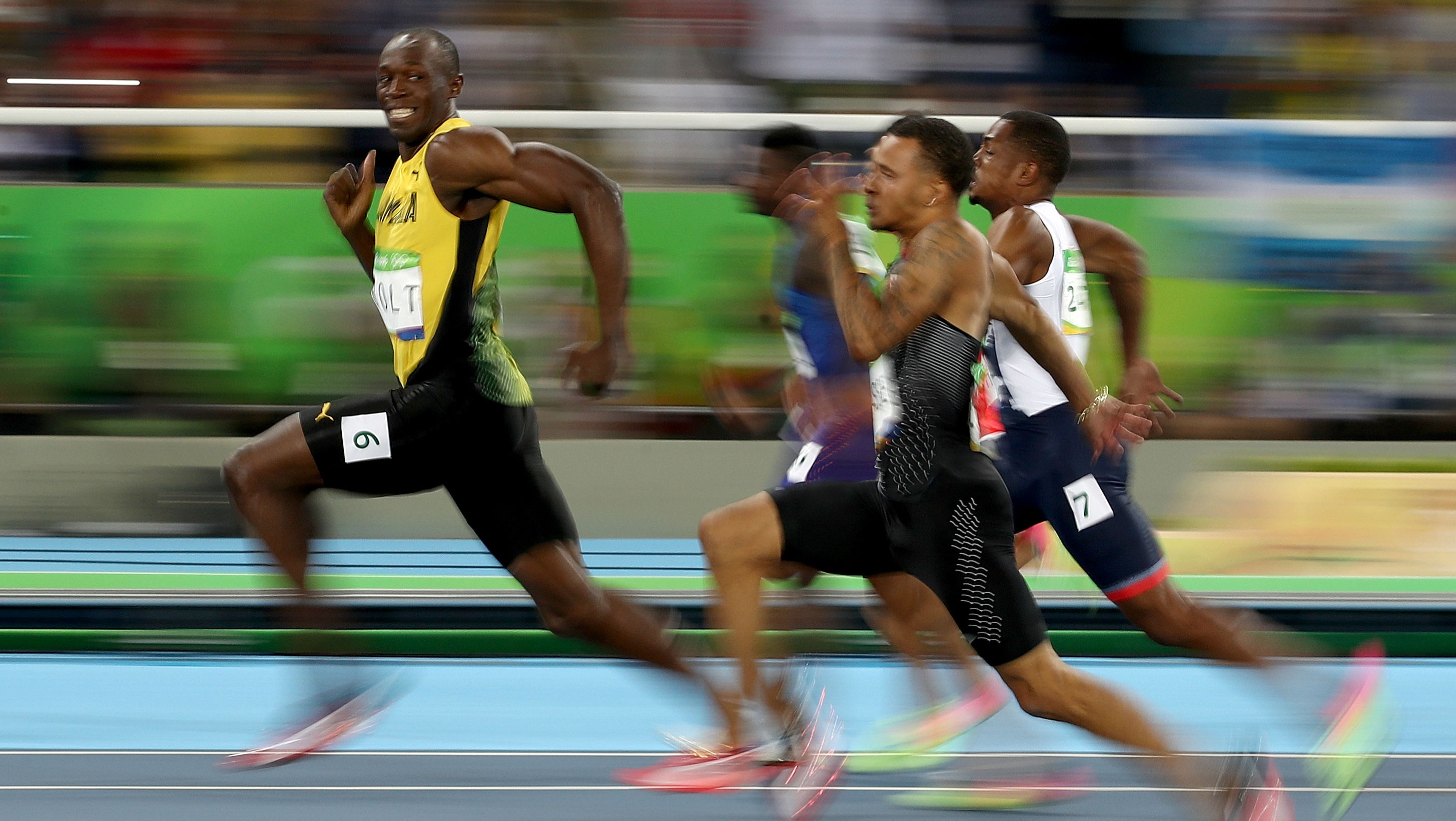What is cupping - and why are some athletes obsessed with it?
US athletes Michael Phelps and Alex Naddour swear by it, but medical evidence is hazy

When Michael Phelps won his first gold of the Rio Olympic Games, many viewers were looking at something other than his medal – the bright purple circles on his back and shoulder.
The marks come from an ancient Chinese form of alternative medicine called cupping. The US Olympic team seems to be a particular fan of the technique, with both Phelps and gymnast Alex Naddour pictured sporting its distinctive marks.
What is cupping?
The Week
Escape your echo chamber. Get the facts behind the news, plus analysis from multiple perspectives.

Sign up for The Week's Free Newsletters
From our morning news briefing to a weekly Good News Newsletter, get the best of The Week delivered directly to your inbox.
From our morning news briefing to a weekly Good News Newsletter, get the best of The Week delivered directly to your inbox.
Cupping is a form of acupuncture in which heated glass suction cups are placed on the skin. The vacuum within gradually draws the skin upwards.
The practice was first recorded in China in 1550BC and was used in Ancient Greece and throughout the Arab world and Europe in the Middle Ages.
Advocates claim it can relieve an array of maladies, including muscle and joint pain, eczema, bronchitis and even the common cold.
"Cupping is thought to draw blood to the affected area, reducing soreness and speeding healing of overworked muscles," the New York Times says.
A free daily email with the biggest news stories of the day – and the best features from TheWeek.com
The process can rupture the capillaries beneath the surface of the skin, causing the red or purple marks which have caught TV viewers' eyes at the Olympics. These typically fade away after a few days.
Does it work?
A 2010 review of 550 clinical studies carried out in China found no significant health risks associated with the technique and even some evidence of its efficacy as a pain reliever, MarketWatch reports, although this could be due to a placebo effect.
The majority of medical practitioners say that, as with other forms of alternative medicine, the rationale behind cupping is no more than pseudoscience.
"Cupping has, from our perspective, no medical benefit whatsoever," Dr Tony Bartone, of the Australian Medical Association, told ABC. He warned that bruising or bleeding as a result of the practice "in really bad cases, could create some deep scarring or nodules".
Even so, cupping converts are convinced they have hit on a winner. The suction cup therapy is "better than any money I've spent on anything else", Naddour told USA Today. "That's been the secret that I have had through this year that keeps me healthy."
-
 The Night Manager series two: ‘irresistible’ follow-up is ‘smart, compelling’ TV
The Night Manager series two: ‘irresistible’ follow-up is ‘smart, compelling’ TVThe Week Recommends Second instalment of the spy thriller keeps its ‘pace’, ‘intrigue’ and ‘sly sexiness’
-
 11 hotels opening in 2026 to help you reconnect with nature
11 hotels opening in 2026 to help you reconnect with natureThe Week Recommends Find peace on the beaches of Mexico and on a remote Estonian island
-
 Zimbabwe’s driving crisis
Zimbabwe’s driving crisisUnder the Radar Southern African nation is experiencing a ‘public health disaster’ with one of the highest road fatality rates in the world
-
 Michael Phelps to race a shark: Six animals he might actually beat
Michael Phelps to race a shark: Six animals he might actually beatSpeed Read The US swimmer will have no chance against a great white, but there are other challenges he could win
-
 Michael Phelps: I never raced against a clean field in international events
Michael Phelps: I never raced against a clean field in international eventsSpeed Read Olympic swimming hero calls on US to do more to improve anti-doping measures in sport
-
 2016: An unforgettable year for sport - in pictures
2016: An unforgettable year for sport - in picturesIn Depth Team GB excelled at the Olympics and Leicester won the Premier League – but maybe we'd rather forget England's trouncing by Iceland?
-
 Olympics 2016: Rio's swimming stars and when to watch them
Olympics 2016: Rio's swimming stars and when to watch themThe Week Recommends From who will shine in the pool this summer to what time are the key finals, we have all the answers